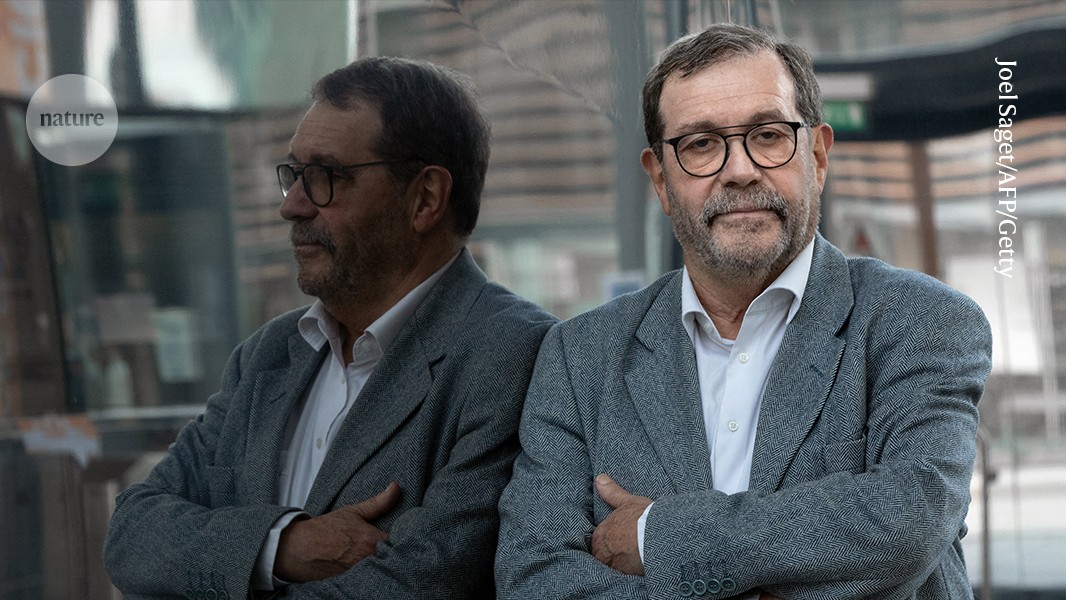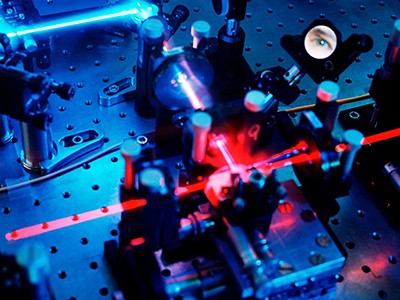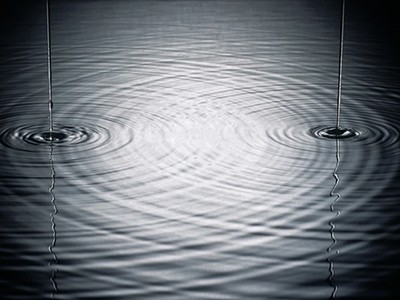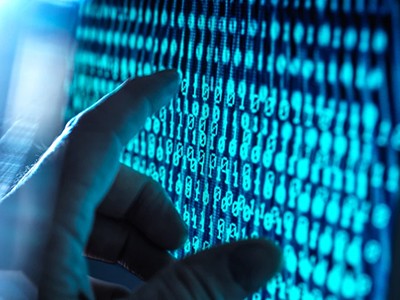Einstein and the Quantum Revolutions Alain Aspect Univ. Chicago Press (2024)
French physicist Alain Aspect is a pioneer in ‘quantum entanglement’ — connections between the quantum properties of subatomic particles that are preserved even at distances too great for signals to travel at light speed. He shared the 2022 Nobel Prize in Physics for this work, which underpins quantum computers and other technologies.
With his book on the foundations of quantum mechanics being released, Aspect, at the University of Paris-Saclay and the Ecole Polytechnique in Paris, tells Nature why he sees parallels between physics and magic, why Einstein doesn’t get all the credit he deserves and how there were two quantum revolutions, not one.
What motivated you to write this book?
First, I wanted to dispel the misconception, which I have heard from many colleagues, that Einstein’s work was good for relativity, but not for quantum physics. Einstein did not believe in the probabilistic nature of quantum theory, and famously said “God does not play dice.” But, in fact, he was a great contributor to the understanding of quantum mechanics. Einstein pointed out the puzzle of entanglement and laid the foundation for the quantum theory of light, which states that light is composed of particles called photons.
‘Shut up and calculate’: how Einstein lost the battle to explain quantum reality
Second, I wanted to popularize science. I knew that speaking about Einstein would be a good way to attract attention. The public should understand science — how else can you make decisions about the great problems that society faces, such as climate change?
But, you should know, I did not exactly ‘write’ this book. In 2005, the French National Centre for Scientific Research (CNRS) gave me the Gold Medal — the highest scientific-research award in France. As part of that, the CNRS did an audio interview with me, which they decided should be the basis of a book. I worked hard on improving the transcript. People who know me say that they can hear my voice when they read it.
In your book, you say that there were two quantum revolutions. What was the first?
The revelation that particles can act as waves, and waves as particles. In 1905, Einstein showed that light exhibited this wave–particle duality. For centuries, most scientists had thought of light only as waves. But Einstein showed that it is made of particles, later called photons, and that each particle has an energy proportional to its frequency. That was the only way to explain why even a high intensity of low-frequency light cannot liberate electrons from a metal.
Then, in 1924, another physicist, Louis de Broglie, postulated that particles of matter can also act like waves. Because electrons orbiting the nucleus of an atom behave like standing (or stationary) waves, they can occupy only certain energy levels. This prevents the electrons from continuously losing energy and collapsing into the nucleus, explaining the stability of matter.
And the second quantum revolution?
Entanglement. This is the extraordinary idea that, according to the rules of quantum theory, two particles can be so correlated that a measurement of the property of one will immediately determine the property of the other — even if they are far apart. Entanglement is both fundamental to quantum theory and has wide-reaching applications.
Particle, wave, both or neither? The experiment that challenges all we know about reality
For example, entanglement has led to new ways of transmitting and processing information. Certain calculations would be tremendously accelerated if one had a quantum computer capable of entangling a large number of quantum bits, or qubits, which are the quantum analogues of bits in a classical computer.
And there are other real-world applications, such as quantum cryptography. With quantum entanglement, you can have information shared instantaneously between two separate locations in space. In theory, you could have a particle code for something at one location and decode it at another.
What attracted you to this problem?
Entanglement has its roots in a paper Einstein wrote with two colleagues, physicists Boris Podolsky and Nathan Rosen, in 1935. They pointed out that the principles of quantum mechanics allow for entangled particles. But this violates the idea of ‘locality’ — that a particle can be influenced only by its nearby surroundings.
Einstein argued that, to have such strong correlations at a distance, the particles had to have properties that quantum theory couldn’t account for. Therefore, quantum theory could not provide the ultimate description of the world.
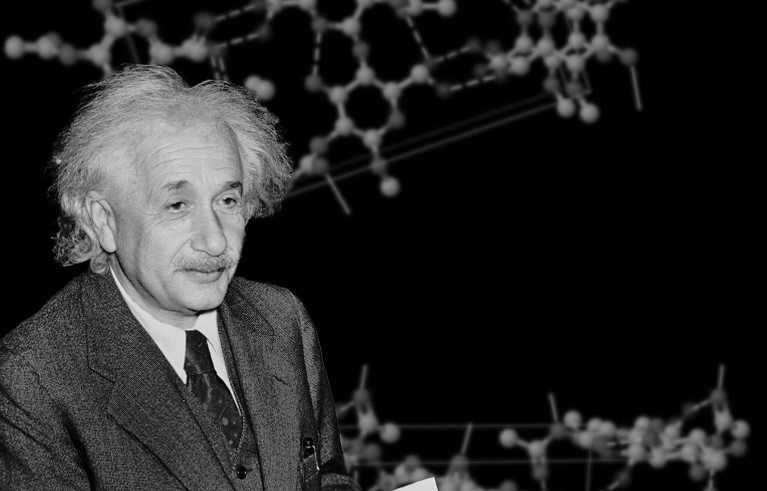
Albert Einstein’s contributions to the field of quantum mechanics are under-appreciated, says Aspect.Credit: GpPhotoStudio/Alamy
Decades later, in 1964, John Bell, a theoretical physicist, carefully read the 1935 paper and discovered something new. He found that, if entangled particles truly had hidden properties that quantum theory could not explain, the correlations between the particles could not exceed a certain level. If the correlations exceeded this upper limit, then entanglement was real.
When I read that paper by Bell, it was love at first sight.
On the one hand, I found Einstein’s reasoning impeccable. On the other, I understand the impeccable reasoning of quantum mechanics. How can it be that the two things are in conflict? For me, this was the most fantastic thing — that a philosophical debate on the nature of the world and the notion of physical reality could be resolved through an experiment.
Some physicists tried to dissuade you from pursuing that experiment. What happened?
When I visited Bell in 1975, he warned me that I would be considered a crackpot. When Einstein published his paper 40 years earlier, quantum physicist Neils Bohr seemed to counter Einstein’s argument. Also, quantum theory was so successful, many thought there was no point in questioning it. For physicists who belonged to this school of ‘shut up and calculate’, the issue was settled.
But I was self-educated in quantum mechanics, and I hadn’t been brainwashed. I was totally open. And when you are open and you see a problem, you want to know the answer.
What sparked your interest in science?
I grew up in Agen, France, a village not far from Bordeaux. I had a fantastic secondary-school physics teacher there, Maurice Hirsch, and really, he’s the man who educated me. He showed us that physics is about describing the world with mathematics as precisely as possible, but not with so much complication that you lose your intuition.
Could the Universe be a giant quantum computer?
He was doing all these fantastic experiments, and one of them, which used a stroboscope to show how a standing wave on a string oscillates over time, later gave me the idea for an important element in my entanglement experiment.
I used the interaction between light and an ultrasonic standing wave in water to develop a switch that redirected photons from one polarizer to another in just a few nanoseconds. The rapid switch meant that the two ends of the experiment could not communicate with each other, closing an important loophole in proving entanglement is real.
Did you get a chance to tell your teacher?
Yes, but his health was not good. I talked to him, but I don’t think he fully understood me. Then I did two things. First, I asked the mayor of Agen to name a street after him. I also have applied to name an asteroid after him.
You also like magic tricks — what draws you?
When I retired, I was kind of unhappy. To cheer me up, a friend, Thierry Giamarchi, who’s an excellent theorist and an excellent magician, said he could mentor me in magic tricks.
What I like about a card trick is that, if I do it in front of you, you will say, “Well, this is unbelievable.” But there is an explanation, just as physics provides an explanation for things that seem unbelievable.
I do the same tricks as an ordinary magician, but I use different words. For instance, when there are cards jumping from the table to my hands, I pretend that it is a quantum tunnelling effect. When I have cards going from my left hand to my right, I call it quantum teleportation.
Is there some burning question about quantum physics that you still have?
Yes — how many quantum bits or quantum objects can you entangle before you might reach a limit, where the group of objects would behave like a classical, non-quantum object.
If there is a fundamental limit, it would be great news. We would understand the frontier between the quantum and the classical world. If there is no limit, then the large group of qubits would give us a fantastic quantum computer, which is also great. I would like to have the answer to that question.


